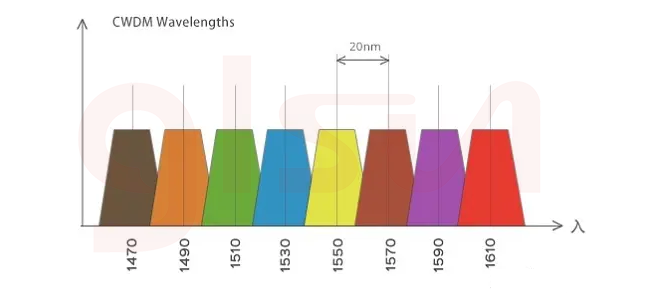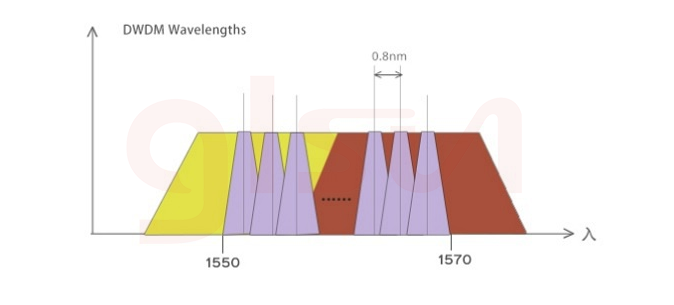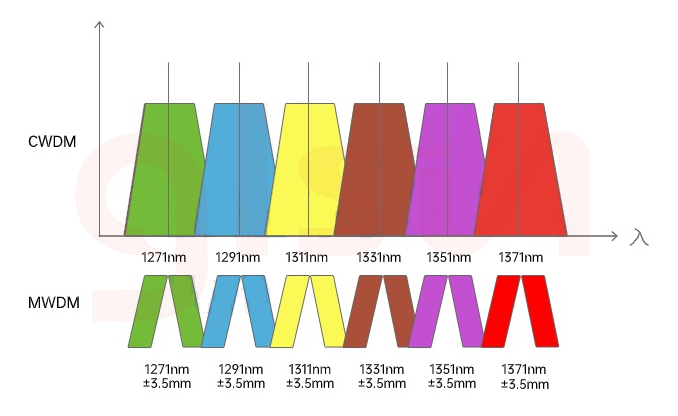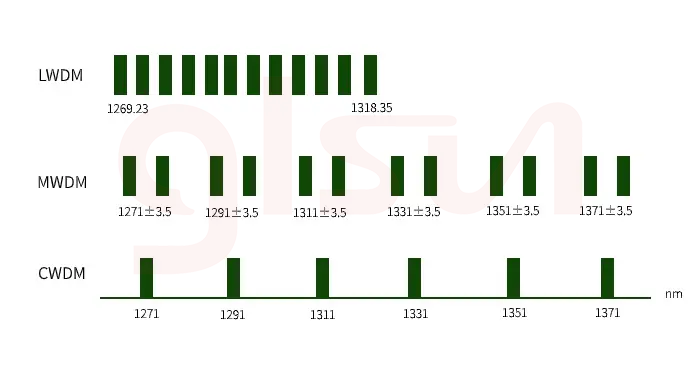Fiber Optic Tech
What is CWDM, DWDM, FWDM, MWDM, LWDM?
WDM bearer schemes include coarse wavelength division multiplexing (CWDM), dense wavelength division multiplexing (DWDM), medium wavelength division multiplexing (MWDM), and fine wavelength division multiplexing (LWDM).
CWDM coarse wavelength division multiplexer
CWDM (Coarse Wavelength Division Multiplexer) is a sparse wavelength division multiplexer, also known as a coarse wavelength division multiplexer. CWDM has 18 different wavelength channels, and the different wavelengths of each channel are separated by 20nm, using wavelengths from 1270 nm to 1610 nm. CWDM supports fewer channels than DWDM because it is compact and cost-effective, thus making it an ideal solution for short-range communications. The biggest advantage of the CWDM system lies in its low cost, and the device cost is mainly reflected in filters and lasers. The wide wavelength interval of 20nm also brings to CWDM the advantages of low requirements on the technical indicators of the laser and the simplified structure of the optical multiplexer/demultiplexer. The structure is simplified and the yield is increased, so the cost is reduced.

DWDM dense wavelength division multiplexer
DWDM (Dense Wavelength Division Multiplexer) is a dense wavelength division multiplexer. The channel spacing of DWDM is 1.6/0.8/0.4 nm (200GHz/100 GHz/50 GHz), which is much smaller than that of CWDM. Compared with CWDM, DWDM with tighter wavelength spacing can carry 8~160 wavelengths on one optical fiber, which is more suitable for long-distance transmission. With the help of EDFA, DWDM system can work in the range of thousands of kilometers.

FWDM Filter Chip Wavelength Division Multiplexer
FWDM (Filter Wavelength Division Multiplexing) filter wavelength division multiplexer is based on mature thin film filter technology. Filter-type wavelength division multiplexers can combine or separate light of different wavelengths in a wide wavelength range, and are widely used in erbium-doped optical amplifiers, Raman amplifiers and WDM optical fiber networks.
MWDM Medium Wavelength Division Multiplexing
MWDM reuses the first 6 waves of CWDM, compresses the 20nm wavelength interval of CWDM to 7nm, and uses TEC (Thermal Electronic Cooler, semiconductor cooler) temperature control technology to expand 1 wave into 2 waves. In this way, the capacity can be increased while the optical fiber can be further saved. MWDM is based on the 6 waves of CWDM, with a left and right offset of 3.5nm and expanded to 12 waves (1267.5, 1274.5, 1287.5, 1294.5, 1307.5, 1314.5, 1327.5, 1334.5, 1347.5, 1354.5, 1367.5, 1374.5nm). MWDM is mainly proposed in the context of China's 5G fronthaul network.

LWDM
LWDM is based on Ethernet channel wavelength division multiplexing Lan-WDM technology, also known as fine wavelength division multiplexing. Its channel spacing is 200~800GHz, which is between DWDM (100GHz, 50GHz) and CWDM (about 3THz). LWDM uses 12 wavelengths in the O-band (1260nm~1360nm) range from 1269nm to 1332nm, with a wavelength interval of 4nm (1269.23, 1273.54, 1277.89, 1282.26, 1286.66, 1291.1, 1295.56, 1300.05, 1304.58, 1309.14, 1313.73 , 1318.35nm). The LWDM operating wavelength is characterized by being located near zero dispersion, with small dispersion and good stability. At the same time, LWDM can support 12 waves of 25G, and the capacity is increased, which can further save optical fibers.




















